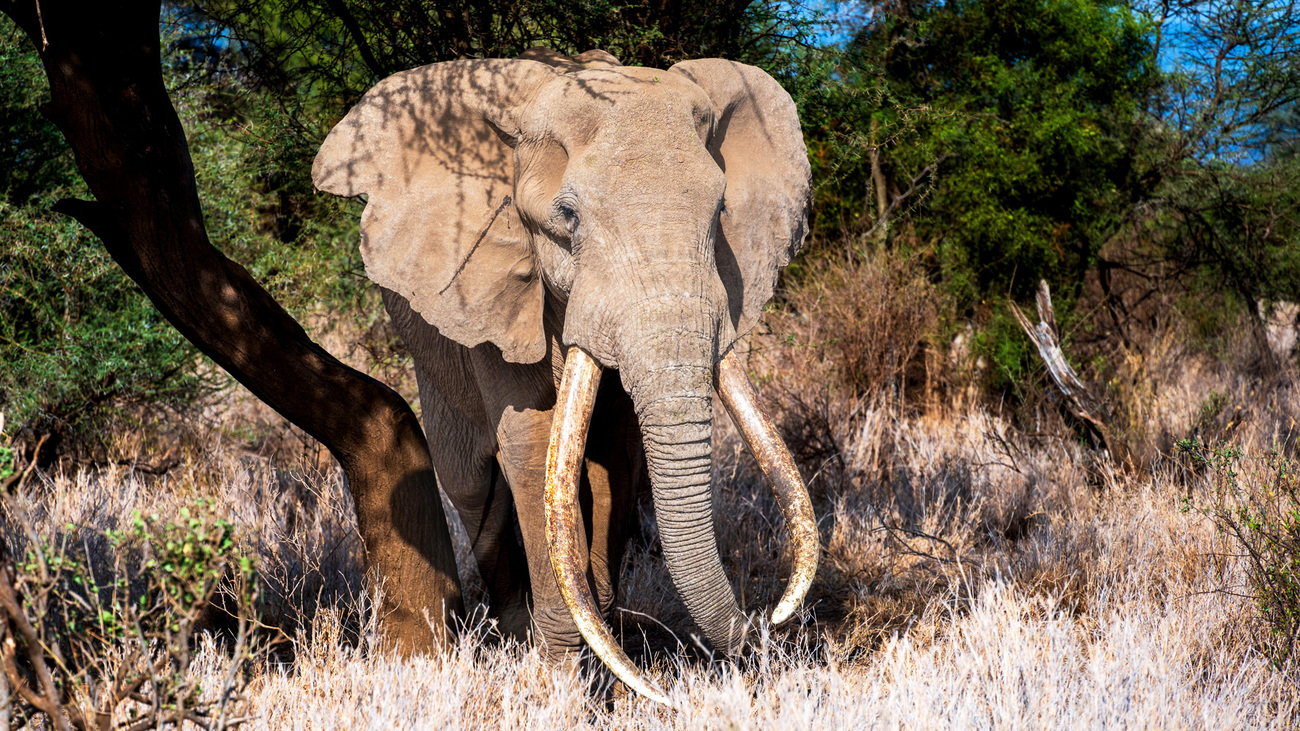Saving the last Super Tuskers: Africa’s most iconic elephants
Saving the last Super Tuskers: Africa’s most iconic elephants
With tusks so long they almost drag on the ground as he roams through the East African savannah, little does Craig the elephant know that he has a target on his back.
Craig also isn’t aware that he’s one of the most famous elephants in Kenya’s Amboseli National Park, renowned as a ‘Super Tusker’—one of the last few of his kind still alive. These humongous, older male African savannah elephants have been hunted relentlessly for centuries, diminishing their population to a lucky few. Today, their numbers are estimated to be fewer than 30.

Poaching poses a threat to all elephants—but Super Tuskers like Craig are sought out for their impressive ivory, fueling an illegal trade network that has permeated every corner of the world. Not only does this trade cost the lives of individual elephants, but it sends ripple effects throughout entire ecosystems.
Super Tuskers lead the way
At 53 years old, Craig has survived and thrived for longer than many other elephants get the chance to do. Craig is a very humble, gentle bull, less aggressive than most males—which explains why his tusks are in pristine condition; he hasn’t broken them in combat.
Craig spends his time traversing the landscape with younger bulls, guiding them and teaching them essential life skills, including survival tactics. Super Tuskers play a crucial social role in their all-male bachelor herds, helping keep unruly, younger elephants in check.
A ripple effect
When adult elephants are slaughtered, their herds suffer. Young calves become orphans. Populations dwindle. And as a result, elephants are unable to perform their necessary functions as ecosystem engineers—dispersing seeds, fertilising the soil, creating food and water sources for other animals, and sequestering carbon from the atmosphere.

Healthy, active male elephants, called bulls, are especially important for ensuring a strong gene pool is passed down to the next generation of elephants. There is a misconception that Super Tuskers are too old to breed—this idea is not based in science and serves as a dangerous justification for the continued hunt.
With Super Tusker sightings becoming rarer and rarer, their killing also poses a threat to Kenya’s wildlife tourism industry, a key sector in the country’s economy that provides sustainable livelihoods for about 1.6 million people.
Urgent action is needed
Just last spring, two more Super Tuskers were tragically killed, in the transboundary landscape of Northern Tanzania, bordering Kenya. Hunting elephants for trophies is unfortunately still allowed in Tanzania—but prohibited in Kenya.
Fortunately, Craig doesn’t usually roam past the border. But nature doesn’t see national boundaries—other elephants haven’t been so lucky.
Craig’s and other elephants’ lives are on the line—poachers continue to threaten the survival of entire herds and damage the health of these important ecosystems.
Related content
Every problem has a solution, every solution needs support.
The problems we face are urgent, complicated and resistant to change. Real solutions demand creativity, hard work and involvement from people like you.